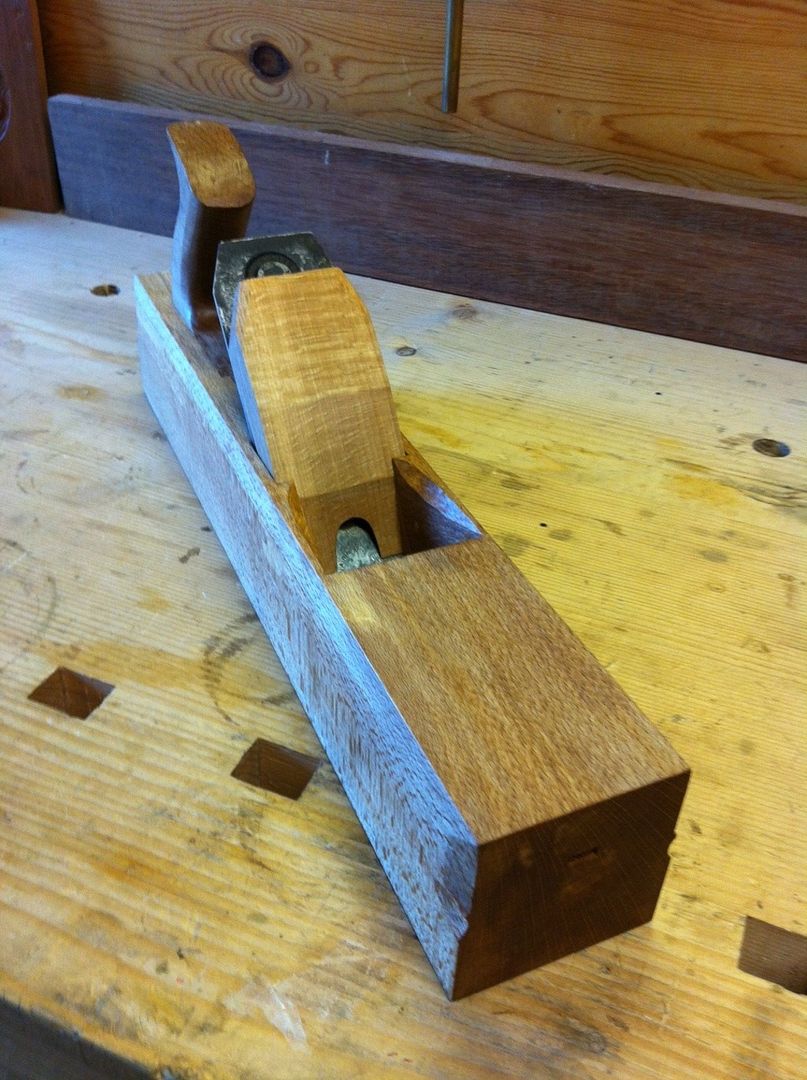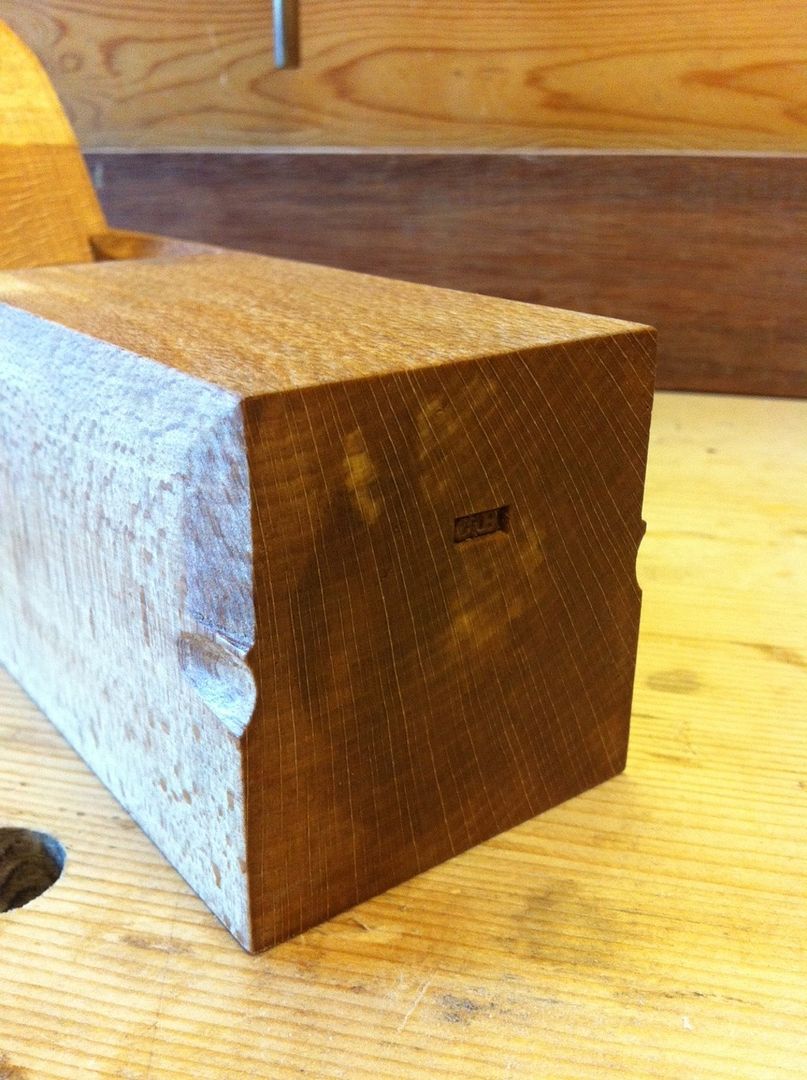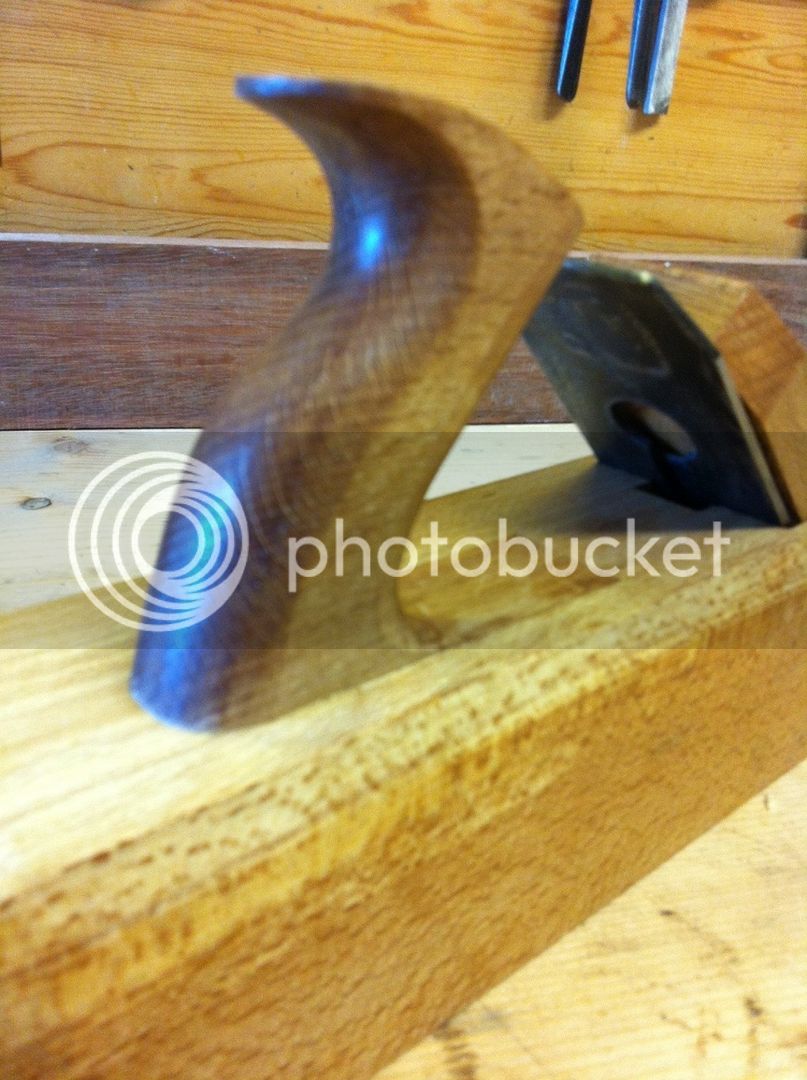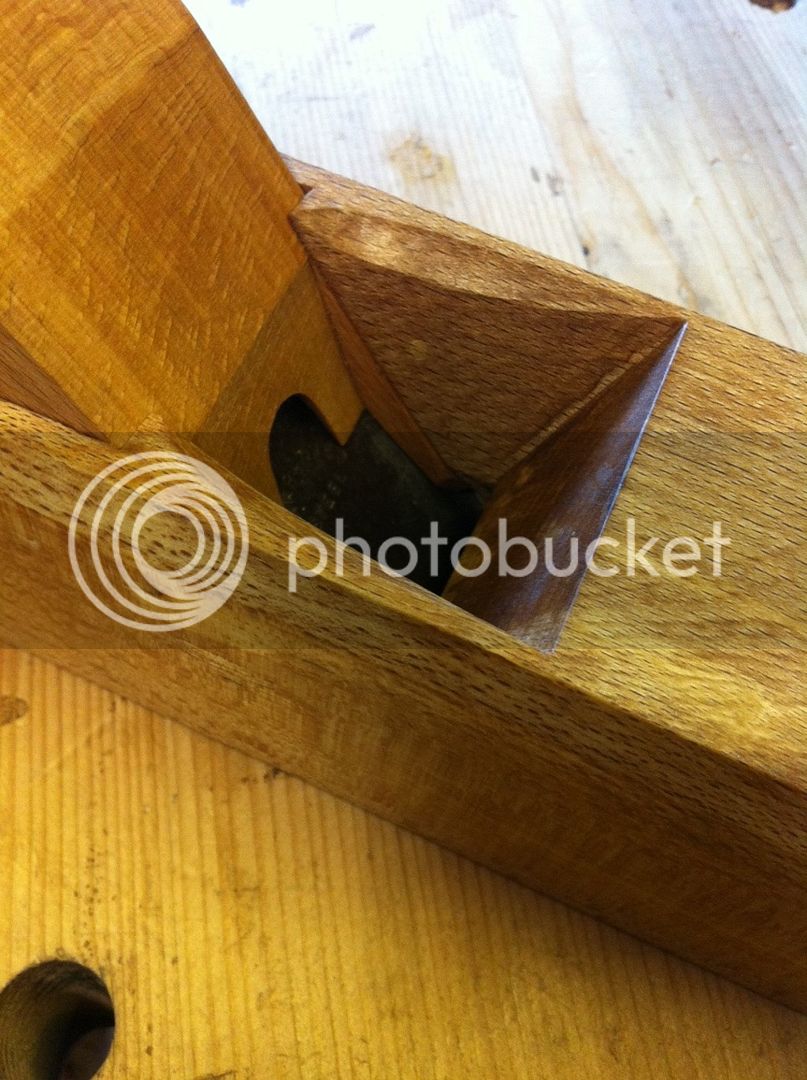You are using an out of date browser. It may not display this or other websites correctly.
You should upgrade or use an alternative browser.
You should upgrade or use an alternative browser.
Made a jack plane
- Thread starter Corneel
- Start date

Help Support UKworkshop.co.uk:
This site may earn a commission from merchant affiliate
links, including eBay, Amazon, and others.
G S Haydon
Established Member
- Joined
- 24 Apr 2013
- Messages
- 1,667
- Reaction score
- 223
Mighty fine! Must finish mine........
Cheshirechappie
Established Member
Nice work!
Nice billet of beech, too. Finding a piece that close to quartered couldn't have been easy.
Nice billet of beech, too. Finding a piece that close to quartered couldn't have been easy.
Corneel
Established Member
Actually, this is pallet wood. From a guy who buys it from a machine factory. I looked very hard in his yard to find some that didn't rot away completely. Luckilly it is very easy to see which boards are quarter sawn, they check along the rays.
I had a very nice large piece of beech for a try plane, but I brought it inside in the garage and it is now checking all over the place (sigh).
I had a very nice large piece of beech for a try plane, but I brought it inside in the garage and it is now checking all over the place (sigh).

£12.50 (£1.25 / count)
£14.45 (£1.44 / count)
JSP M632 FFP3moulded Disposable Dustmask (Box of 10) One Size suitable for Construction, DIY, Industrial, Sanding, dust protection 99 Percent particle filtration Conforms and Complies to EN 149
Amazon.co.uk

£17.99 (£1.80 / count)
£27.44 (£2.74 / count)
3M 8822 Disposable-fine dust mask FFP2 (10-pack)
Amazon.co.uk
Corneel
Established Member
The iron is from Fowler Smith @ co.
Cheshirechappie
Established Member
Corneel":ppddcpah said:Actually, this is pallet wood.
I can hear D_W's jaw hitting the floor even from several thousand miles away! :lol:
Corneel
Established Member
:wink:
worn thumbs
Established Member
Great job!Theres no better way to possess a unique tool.
Cheshirechappie
Established Member
Are my eyes playing tricks on me, or have you slightly offset the handle to the right of the plane looking from the heel end? If so, it will be interesting to hear your thoughts on how the plane behaves once you've had a chance to do some work with it. I know Richard Arnold made a pair of planes like this, but he found that being left-handed, he didn't get on with them at all.
Corneel
Established Member
Indeed Cheshirechappie, the tote is offset like they did in the 18th century in England. They continued this tradition for a very long time in Holland, I have a few planes with offset handles that are clearly late 19th/early 20th century. I like it, I like how it looks and it somehow gives a more natural feel to how you hold the plane. It also gives your pinky a place to go when the handle is small.
But I get along fine with my Stanleys too, so it is mater of personal preference.
But I get along fine with my Stanleys too, so it is mater of personal preference.
Cheshirechappie":270l3v2t said:Corneel":270l3v2t said:Actually, this is pallet wood.
I can hear D_W's jaw hitting the floor even from several thousand miles away! :lol:
I'm a bit too lazy to look that hard!!
Horizon charges us quite a bit for the wood over here, but it shows up in the shop on a pallet. Freight guy even rolls it in.
Looks good, Kees! Let us know how the offset handle gets on with you. Of the planes for it to be on, I think the jack is probably the best - it sort of forces a two handed grip.
Corneel
Established Member
Thanks for the heads up David. To be sure, it was your video series on youtube that pulled me over the line. It just took a a bit of time. BTW, I am working on the second jack plane now. Next I am really going to practice on tighter mouths on a smoothing plane. Those use a lot less wood, so it doesn't matter so much when it's a failure.
Corneel
Established Member
There are quite a few pictures in my blog: http://seekelot.blogspot.nl/
Most tools are pretty standard. I do have one Lie Nielsen float, a sidefloat that I also use as a bedding float. That's a marvelous tool. I have made an edge float from a rather thick ruler, but don't use it much. To saw the abutments I made a small narrow saw without any set on the teeth. it really likes to bind in the cut of course. An old chisel, sharpened at 90 degrees is a scraper, also very usefull in bedding the iron.
Most tools are pretty standard. I do have one Lie Nielsen float, a sidefloat that I also use as a bedding float. That's a marvelous tool. I have made an edge float from a rather thick ruler, but don't use it much. To saw the abutments I made a small narrow saw without any set on the teeth. it really likes to bind in the cut of course. An old chisel, sharpened at 90 degrees is a scraper, also very usefull in bedding the iron.
Corneel
Established Member
How about a video? It didn't have a handle yet in this vid, that's why I wear a glove.
https://www.youtube.com/watch?v=w2RR2PYeV4I
https://www.youtube.com/watch?v=w2RR2PYeV4I
Similar threads
- Replies
- 11
- Views
- 1K
- Replies
- 5
- Views
- 649

































